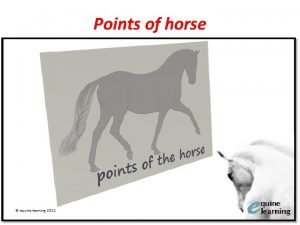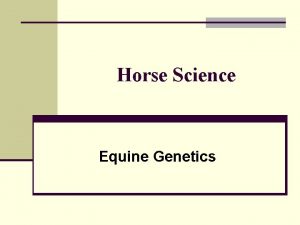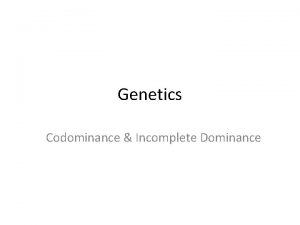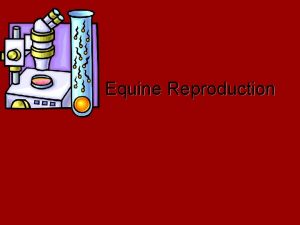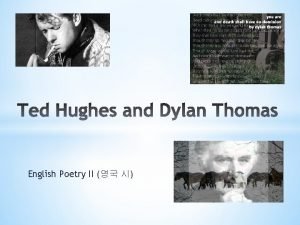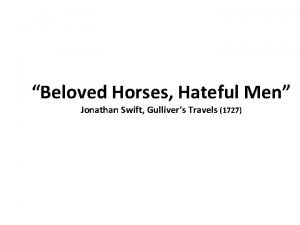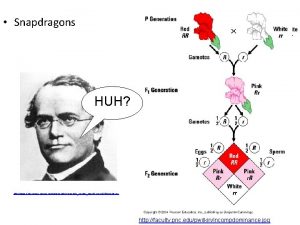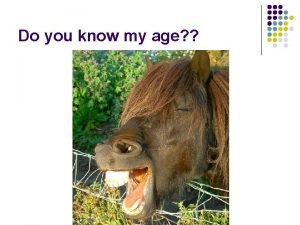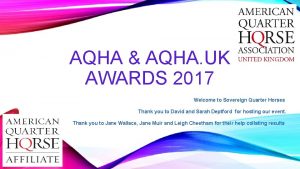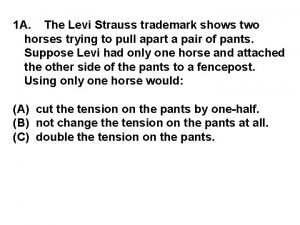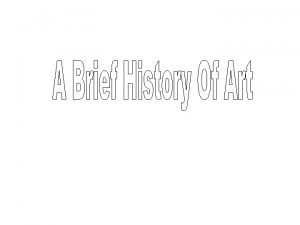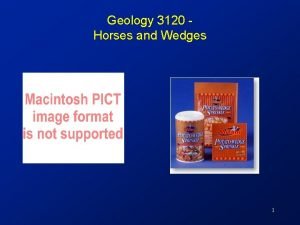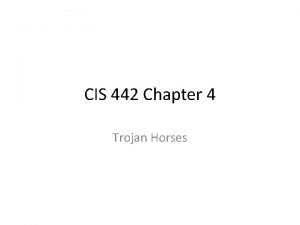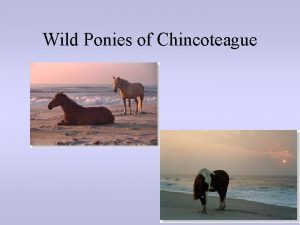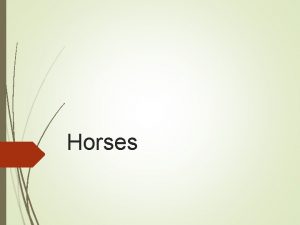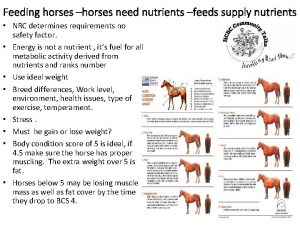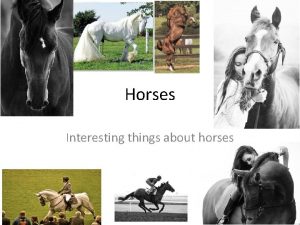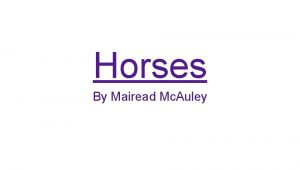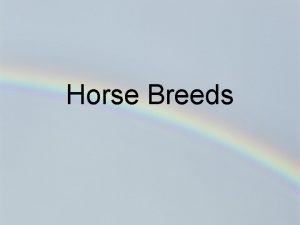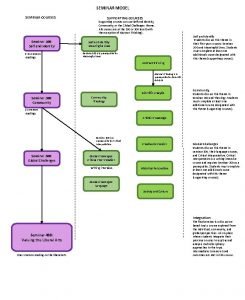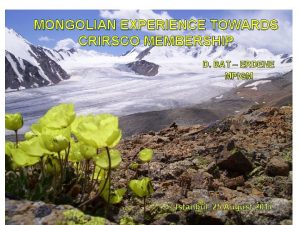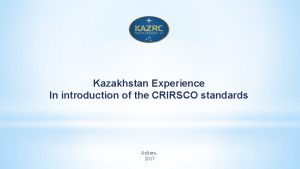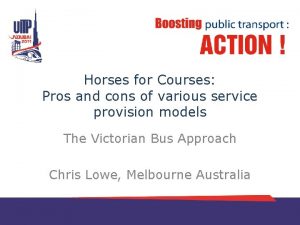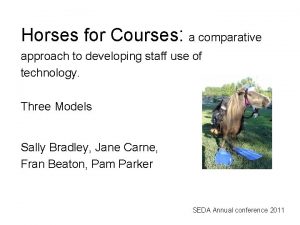Horses for Courses CRIRSCO Template and UN Framework



















- Slides: 19

Horses for Courses: CRIRSCO Template and UN Framework Classification Ruth Allington* and Stephen Henley** *President, European Federation of Geologists (EFG), Joint Senior Partner GWP Consultants LLP, Member of Pan-European Reserves & Resources Reporting Committee (PERC) **Chairman of PERC and a PERC representative on the Committee for Mineral Reserves International Reporting Standards (CRIRSCO) 1

Two distinct reasons for public reporting of exploration results, resources and reserves: • Governmental, inter-governmental, or NGO reporting of mineral resource estimates and forecasts. – Objectives: Reliable mineral inventory to underpin minerals policies (especially cross border e. g. Europe), available to exploration and mining companies to attract inward investment and exploration activity • Disclosure for companies quoted on stock exchanges. 2 – Objectives: Reliable, transparent information for investors and potential investors

Resolving confusion • There is confusion amongst some practitioners as to which system should be used (and when) • The idea of a universal system for all minerals is attractive to some – an international common language 3

Systems for public reporting of mineral reserves and resources • Two international systems for classifying and reporting mineral reserves and resources: – that developed by the Committee for Mineral Reserves International Reporting Standards (CRIRSCO) and – the United Nations Framework Classification for Fossil Energy and Mineral Reserves and Resources (UNFC). • Key definitions and terminology used for reporting solid mineral reserves and resources (and exploration results) within these two classifications have been aligned with each other through extensive co-operative efforts between CRIRSCO and UNECE since the mid 1990 s. 4

Key features – CRIRSCO template • The CRIRSCO template is the set of standard definitions and principles which are incorporated in the family of standards developed nationally by the National Reporting Organisations that collectively comprise CRIRSCO: –JORC (Australia) –CIM (Canada) –SAMREC/SAMVAL (South Africa) –PERC (Europe) –SME (United States) –Comisión Minera de Chile (Chile) –NAEN (Russia) • Whilst the core of the various standards is practically identical (and becoming ever more closely aligned), the incorporation of national regulatory requirements in some of the standards provides important differences – the standards that are mandatory or reference standards are commonly referred to as ‘codes’. • For the geoscientist, a report prepared under one national standard can readily be referenced to the requirements of another 5

Key features – CRIRSCO template • A basis for defining public reporting standards on a national/regional basis • Transparency, Materiality, Competence are central principles • Three sorts of information: exploration results, mineral resources, mineral reserves • Exploration results can be quoted only as ‘raw’ data, not tonnage and grade • Resources are estimates of mineral in the ground • Reserves are estimates of mineral as mined (allowing for losses/dilution) 6

Key features – CRIRSCO template • Reports are prepared by or under the supervision of a Competent Person (Qualified Person in Canada) who signs off and takes personal responsibility • CPs/QPs must have minimum relevant experience and hold professional qualifications – acceptable qualifications (titles) are listed in all the codes and standards • For some jurisdictions registration as a QP/CP in that country may also be required (e. g. Chile, Russia) • Recognition between NROs of suitable qualifications (ROPO agreements) – periodic auditing of listed ROPOs and membership classes by other NROs and by regulatory bodies • Discipline of professionals is by professional bodies. Discipline of companies listing and relying on the report is through the stock exchange regulator 7

Relationship between exploration results, mineral resources & mineral reserves in the CRIRSCO template MINERAL RESOURCES MINERAL RESERVES Exploration Results Increasing level of geological knowledge and confidence Inferred Indicated Probable Measured Proved Consideration of mining, metallurgical, economic, marketing, legal, environmental, social and governmental factors (the “Modifying Factors"). 8

Relationship between exploration results, mineral resources & mineral reserves in the CRIRSCO template MINERAL RESOURCES MINERAL RESERVES Geologists with appropriate experience and professional credentials responsible for progression down this axis Exploration Results Increasing level of geological knowledge and confidence 9 Inferred Indicated Probable Measured Proved Many professionals (including geologists other Consideration of mining, metallurgical, economic, and marketing, geoscientists) may besocial responsible for progression legal, environmental, and governmental factors (thealong “Modifying this Factors"). axis

Key features – United Nations Framework Classification • Only a classification; no underlying principles as it is not a reporting standard • Geologically based – no equivalent to ‘modifying factors’ of CRIRSCO • Includes all possible material – including “uneconomic” and even “undiscovered” (so includes stuff that may not even exist!) • Does not include reserves: only ‘in-situ’ material • CRIRSCO resource categories map to corresponding UNFC categories (common terminology) • CRIRSCO Template is the set of commodity-specific 10 definitions in UNFC for all solid minerals

11

12

13

14

15

16

17

Conclusions • These two systems are related and use consistent vocabulary but they are not interchangeable • Neither provides (or could provide) a universal tool that can be applied to any situation where public reporting of mineral resources is necessary. • In our opinion, any move to adoption of only one international system for solid minerals would be highly undesirable – the appropriate system should be chosen to match the objectives of the reporting in question. 18

Contact information: Ruth Allington rutha@gwp. uk. com Stephen Henley steve@vmine. net 19
 Crirsco
Crirsco Hold your horses idiom meaning and sentence
Hold your horses idiom meaning and sentence Some trust in chariots and some in horses song
Some trust in chariots and some in horses song Trojan horses spyware and worms are all forms of
Trojan horses spyware and worms are all forms of Theoretical framework sample
Theoretical framework sample Point of the horse
Point of the horse Herda gene in horses
Herda gene in horses Punnett square example
Punnett square example Where is a horses vagina
Where is a horses vagina Ted hughes the horses
Ted hughes the horses How does the horse move in chess
How does the horse move in chess Beloved horses hateful man traduzione
Beloved horses hateful man traduzione All the king's horses kurt vonnegut
All the king's horses kurt vonnegut Codominance horses
Codominance horses 7 year hook horse teeth
7 year hook horse teeth Feed in a drum
Feed in a drum Black cowboy, wild horses comprehension questions
Black cowboy, wild horses comprehension questions Sovereign quarter horses
Sovereign quarter horses The levi strauss trademark shows two horses
The levi strauss trademark shows two horses Stone age horse
Stone age horse





